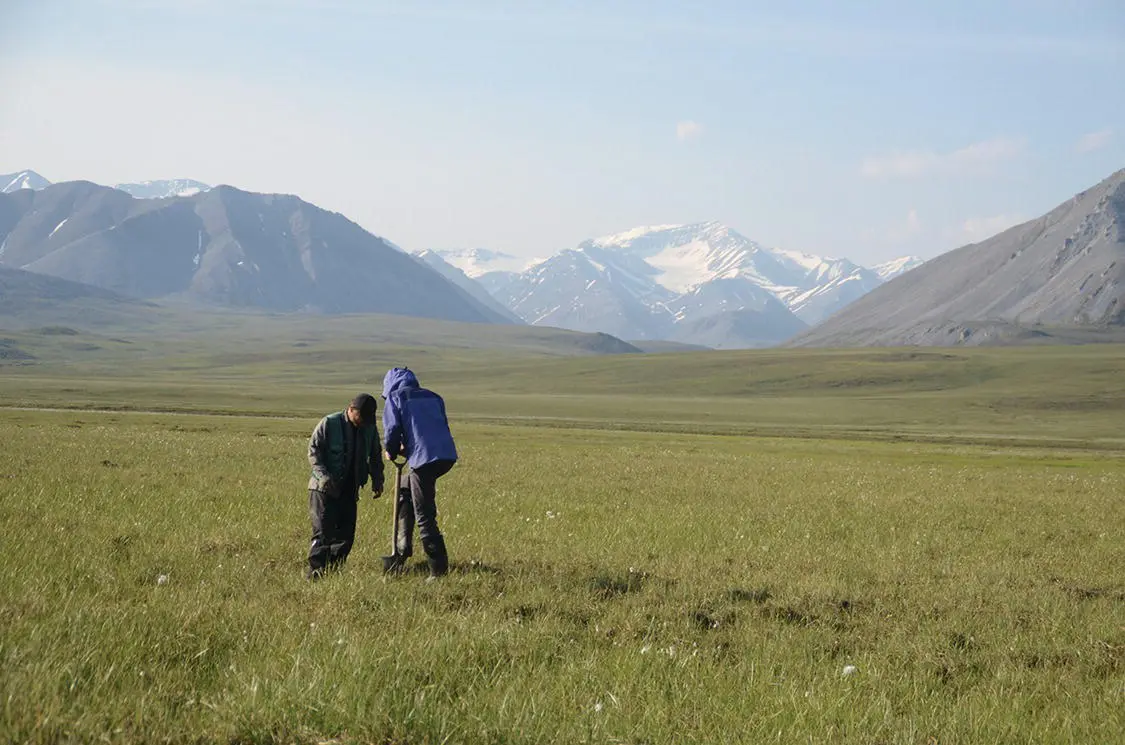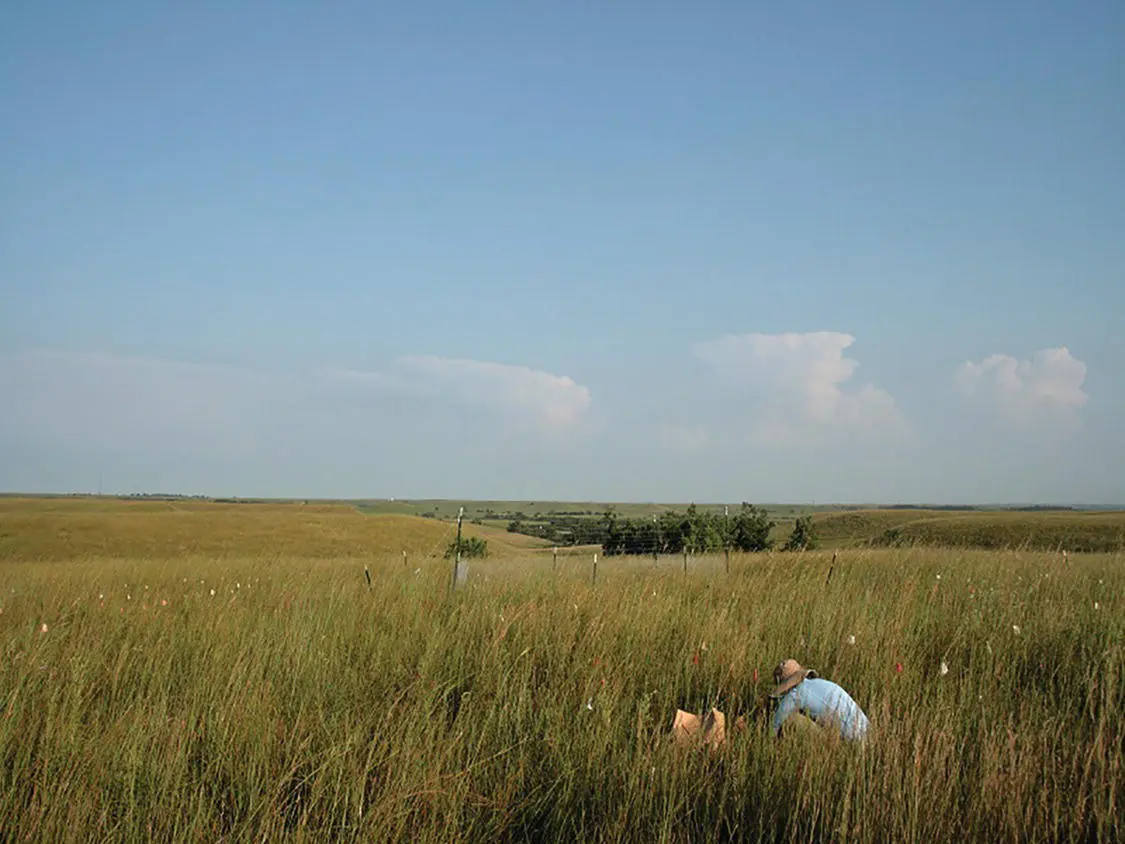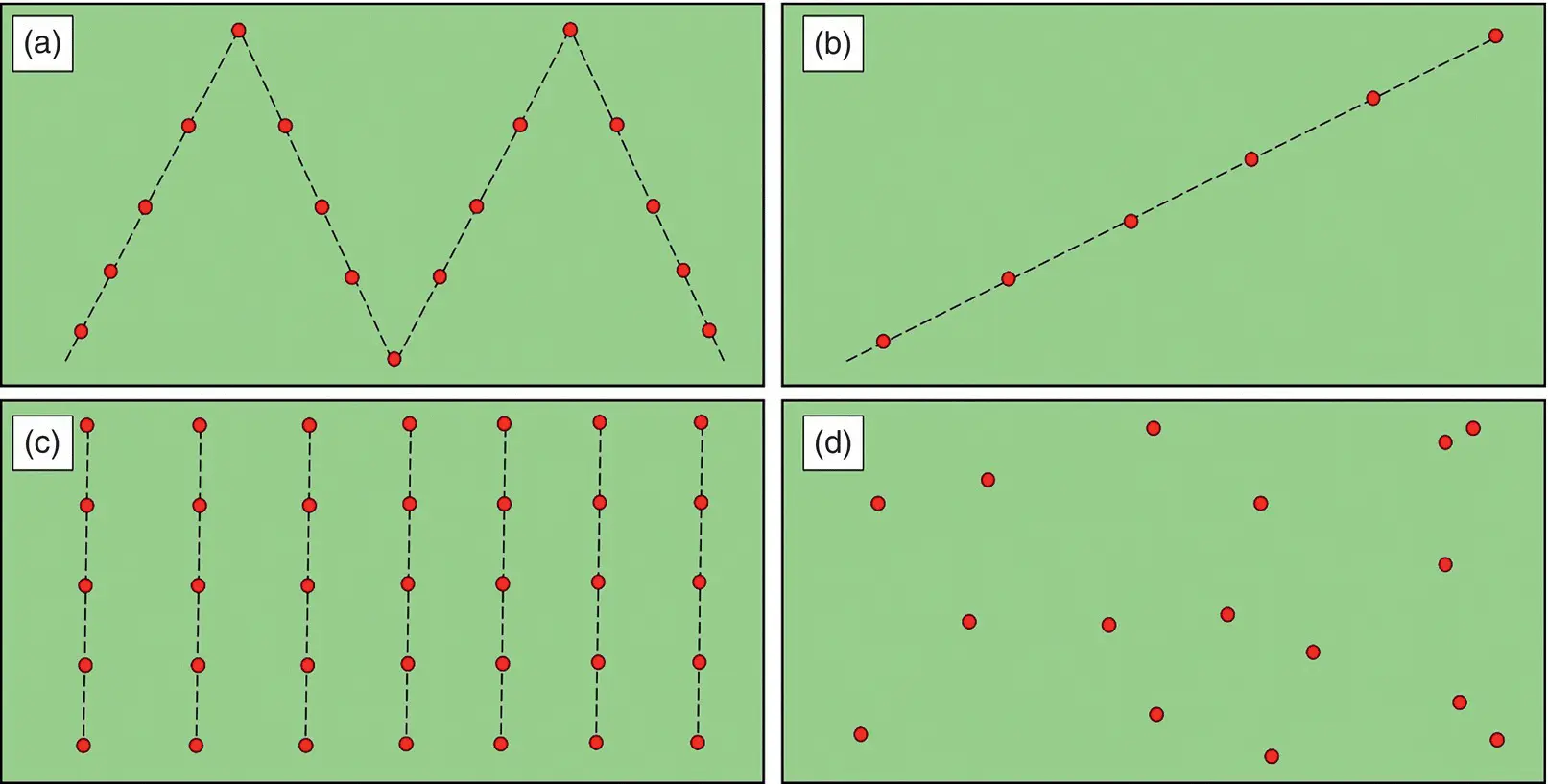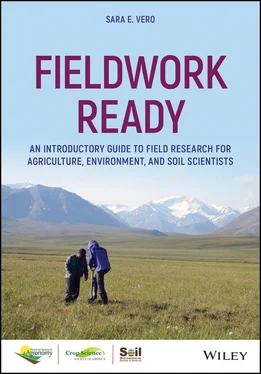In situ measurements (often coupled with electronic sensors and validated against laboratory samples). Monitoring at river outlets may take this approach, in which bankside devices automatically extract samples from the watercourse and analyze them on location for nitrogen and phosphorus.
Observational monitoring may be used for wildlife studies. This can take the form of GPS tagging of birds, fish, or animals, the use of catch‐and‐release traps, or of field cameras to observe activity and behavior.
Monitoring can be expensive including the initial outlay for establishment of the experiment, its ongoing maintenance and its high demand for consumables. Large monitoring endeavors often require dedicated staff for maintenance of equipment. However, these challenges can be overcome and increasingly the value of monitoring studies is appreciated, particularly for providing baseline or background data for other research.
There are a number of groups and consortiums comprising discrete monitoring projects who collaborate across sites or adhere to agreed standards, measurements, and protocols. These programs might focus on one particular field of research or may take an integrative approach incorporating many distinct fields. As an example, the Long‐Term Ecological Research (LTER) Network includes 26 independent research sites funded by the U.S. National Science Foundation (NSF) since 1980. These sites represent a breadth of ecosystems including tallgrass prairie (Konza, Kansas), the Antarctic (Palmer Station, Anvers Island), and marine (California Current). The Long‐Term Agroecosystem Research (LTAR) network created by the USDA Agricultural Research Service (USDA‐ARS) similarly co‐ordinates 18 independent sites across the contiguous United States. The goal of LTAR is to investigate and develop strategies for the sustainability of agricultural production under the three pillars of productivity, environment, and rural prosperity.
These distinct sites follow a consistent approach to data collection across the entire network, although specific measured variables are selected as appropriate to each site (for example, depth of permafrost is measured at the Artic site but would be irrelevant for the urban biome in Arizona). These measurements allow conceptual understanding of these ecosystems, development of ecological, hydrologic, and biogeochemical models, and collaborative investigations across contrasting environments. Ambitious research programs such as these support long‐term monitoring over multiple decades from which projections into the future can be modeled and act as a benchmark against which comparable sites can be evaluated. Furthermore, they provide well‐characterized, representative, and secure facilities in which controlled and replicated experiments can be executed. An example of this is the watershed‐scale tallgrass prairie experiment that has been conducted at the Konza Prairie LTER site in Kansas. In that experiment, 60 hydrologic watersheds have been subject to treatments including bison and cattle grazing, and five burn frequencies (annual, 2‐yr, 4‐yr, 20‐yr, and >20‐yr intervals, in addition to no‐burning) since the establishment of the facility in 1972 (it later became one of the six founding LTER sites in 1980). These treatments have provided insights into the implications of management for the remaining US prairie grasslands and species.
Sampling Design
Sampling Patterns
Sampling points may be either controlled or randomized ( Fig. 2.12). A stream ecological survey for example (particularly if repeated across multiple seasons or years) will often be conducted at predetermined points along the watercourse. These may be selected based on multiple criteria for example, hydromorphology, distance from the outlet, proximity to a nutrient point source, access (a practical consideration), or any other aspect identified by the research as being of importance. It is vital that if predetermined sampling points ( Fig. 2.13) are used in any type of field survey that the researcher records the reasons for their selection, and when publishing, can explain to the reviewer and reader why they made their decision ( Fig. 2.14).

Fig. 2.12These researchers are soil sampling in Alaska. There are a variety of sampling patterns which may be used and you should consider which approach is most appropriate before embarking on a sampling campaign.
Source: Jaclyn Fiola.

Fig. 2.13 Coloured flags are used here to mark where the researcher is identifying plant species composition using the Daubenmire method. This experiment is part of the Nutrient Network co‐operative, in which consistent sampling methods and patterns are applied at independent sites.
Source: Jesse Nippert.

Fig. 2.14 GPS devices can be used to accurately identify sampling locations. These are discussed in the Preparation section.
Source: Sara Vero.
A variation on this is a semi‐randomized approach. For example, where topsoil is sampled for nutrient concentrations, a fixed pattern is walked across the field and an auger is used to take samples to a prescribed depth at regular intervals. The general pattern is pre‐arranged, (often a W‐pattern ( Fig. 2.15a)), but the specific location of each sample is random and designed to incorporate the variability seen across the entire field once the samples are aggregated.
Transect sampling is often used in ecological studies, in which measurements are made at regular intervals along a line through the sampling area ( Fig. 2.15b). However, applications do exist in other disciplines such as boring of groundwater wells along hillslopes, or excavation of soil pits along a “catena” (a sequence of related but distinct soil profiles along a slope).
Grid patterns ( Fig. 2.15c) allow an even distribution of samples across an area and are often used in precision agriculture to identify variations in soil moisture, nutrients, crop yield, etc. at subfield scale. Detailed discussion of the methods and applications of precision agriculture approaches are available in Shannon et al. (2018).
A completely randomized approach may be employed ( Fig. 2.15d) as in the case in some ecological sampling regimes. This involves measurements or samples being obtained at randomized locations within the study area. Achieving true random selection can be difficult due to unintentional human influence. Dividing your study area into a grid and using a random generator to select squares in which to sample is one simple approach.

Fig. 2.15 Field sampling patterns. (a) W‐pattern, typical for soil survey, (b) transect, typical for herbage composition, (c) grid, common for high resolution mapping (e.g., to support precision agriculture, and (d) completely randomized.
Source: Sara Vero.
Two different approaches to transect sampling exist; line and point. In line sampling, a straight line of defined length is measured between two points. Everything which touches or is intercepted by the line is quantified. For example, in a species abundance survey, one would quantify what plants were at which position along the transect and also would list any stretches of bare ground ( Fig. 2.16a). The point transect approach is similar, however only the species at a predetermined distance along the line is measured, for example, every 20 cm ( Fig. 2.16b).
Читать дальше
















